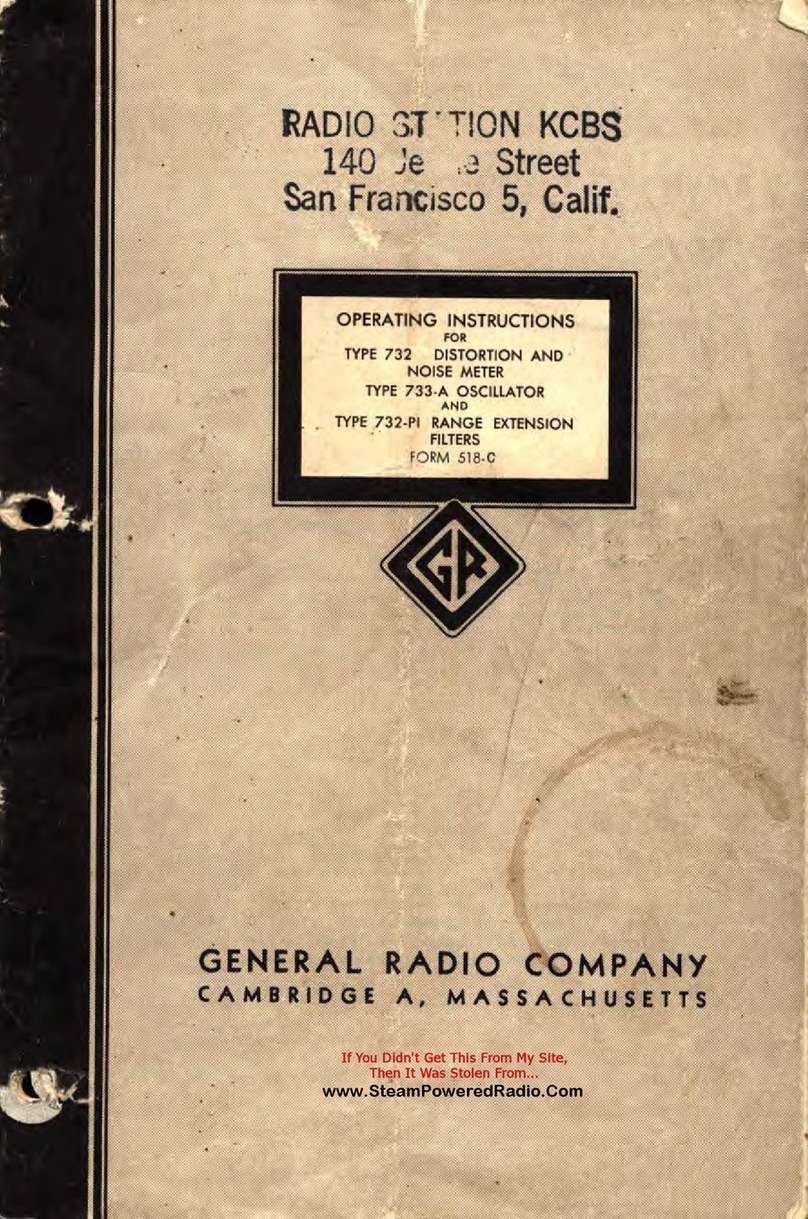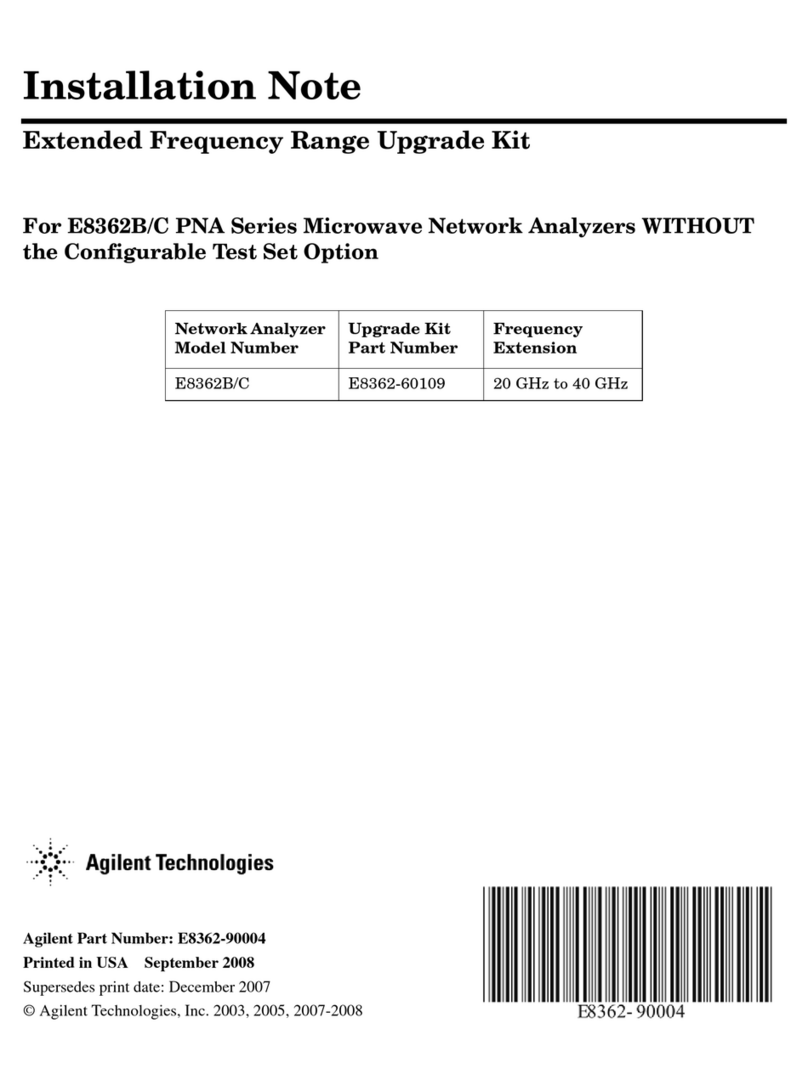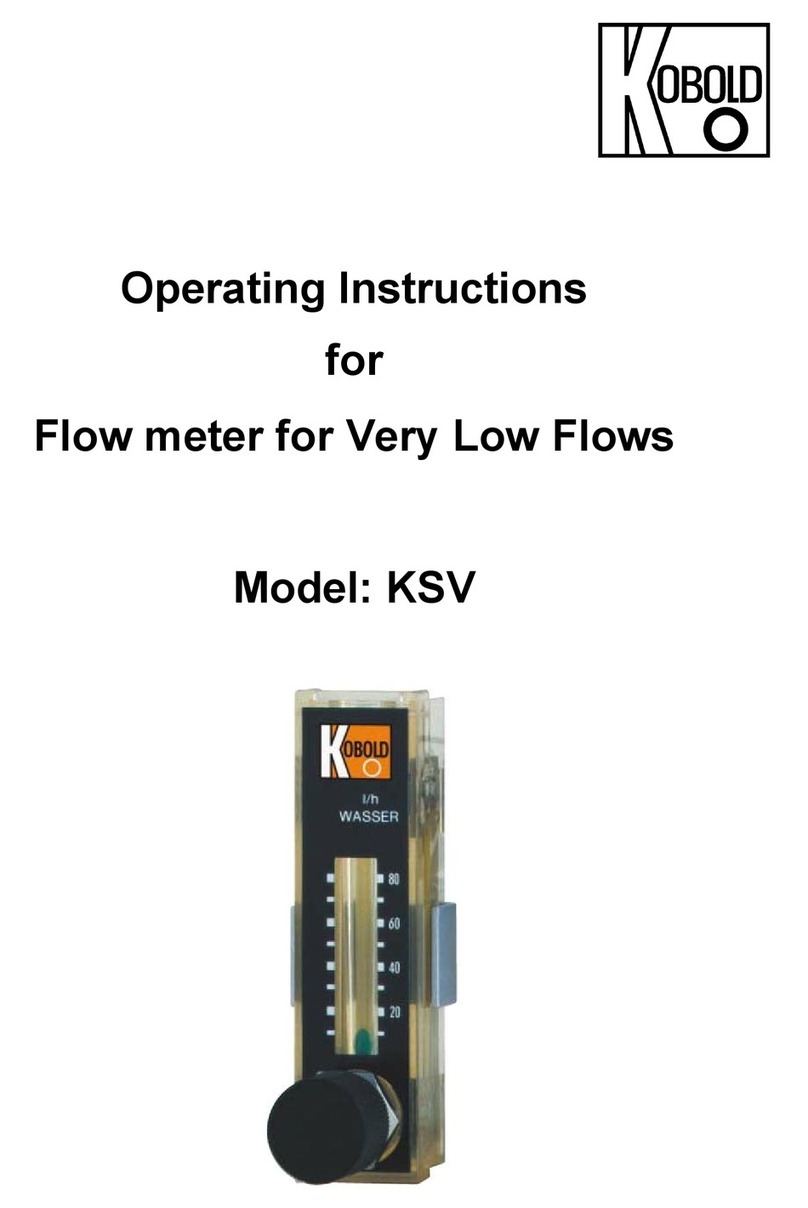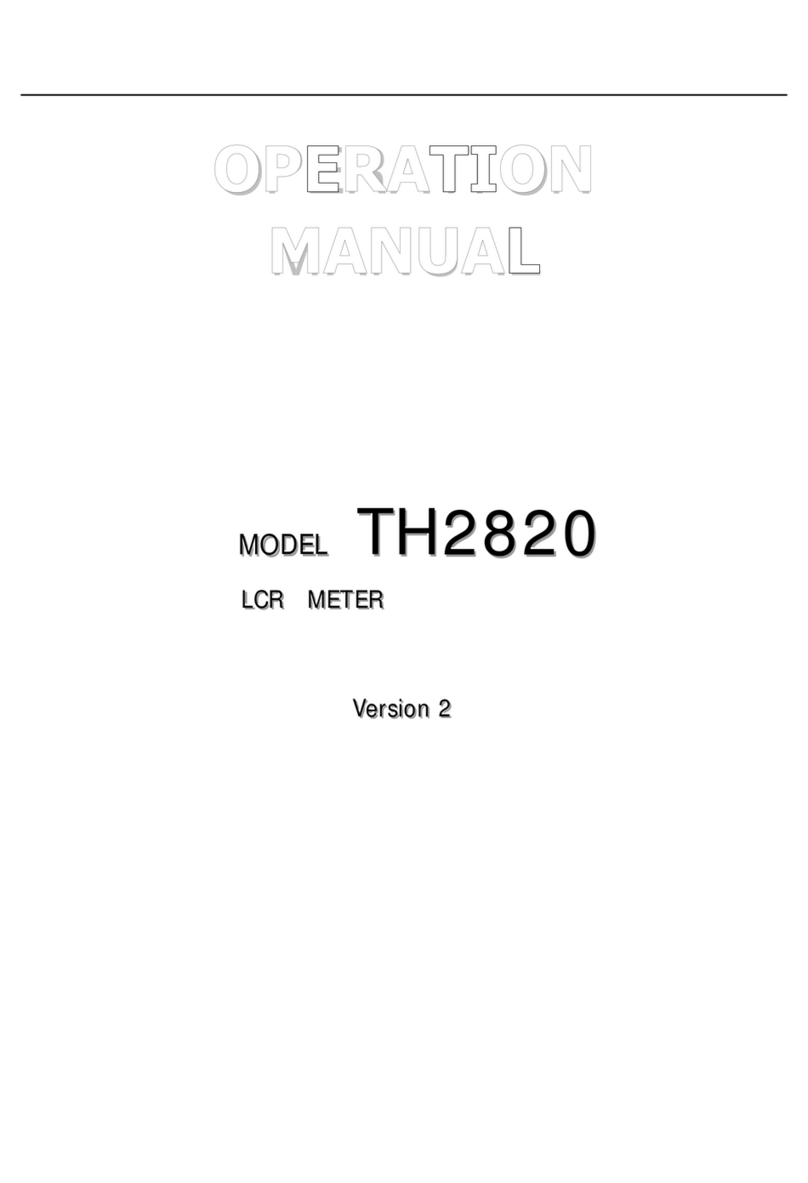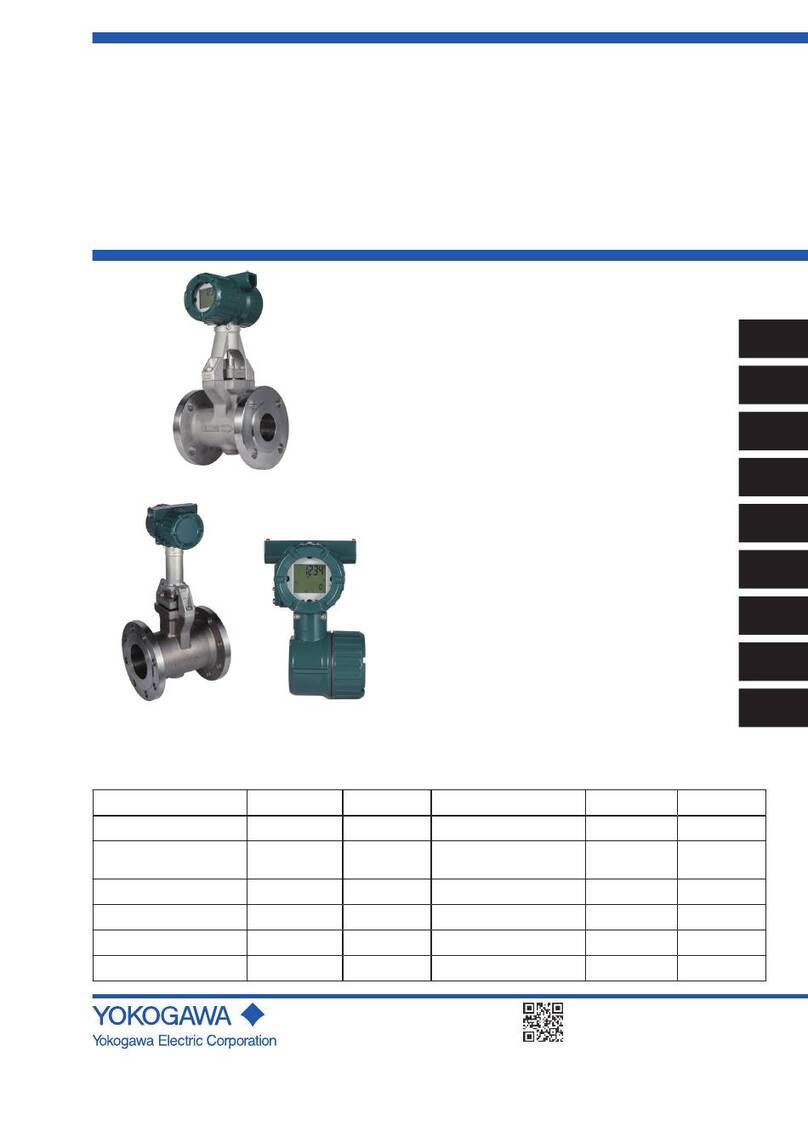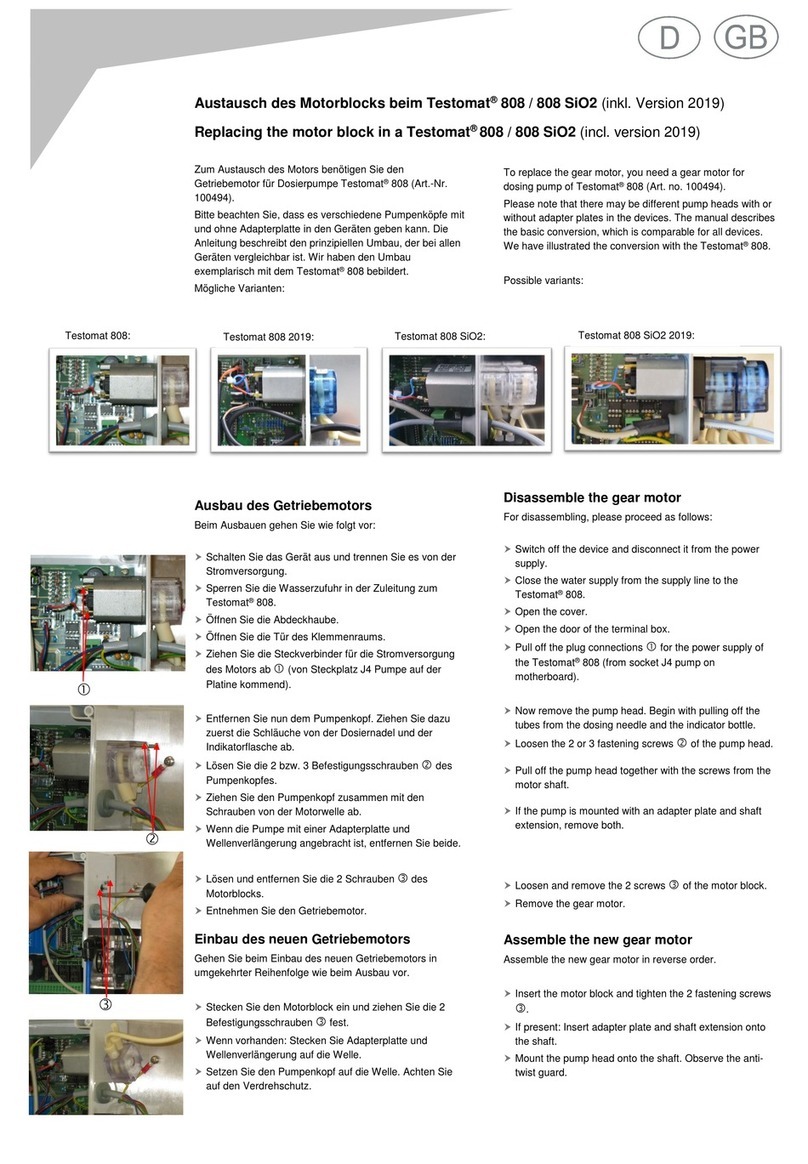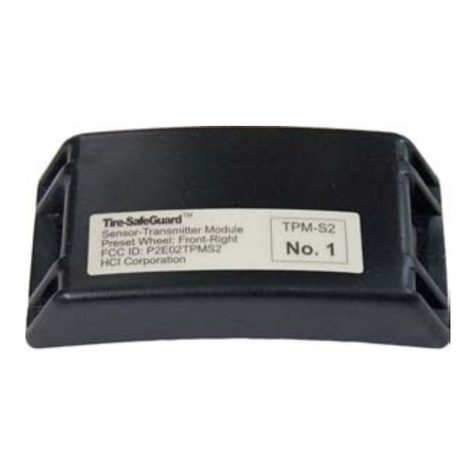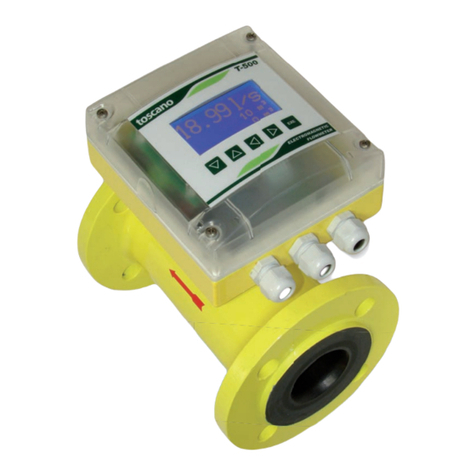GENERAL RADIO COMPANY 620-A User manual


GENERAL RADIO
COMPANY
FIGURE
1.
FIGURE
2.

GENERAL RADIO
COMPANY
OPERATING
INSTRUCTIONS
FOR
TYPE
620-A
HETERODYNE
FREQUENCY
METER
AND
CALIBRATOR
PART
l
DESCRIPTION
PURPOSE
The
Type
620-A
Heterodyne
Fre-
quenGy
Meter and
Calibrator
is
designed
particularly
for
frequency meas-
urements over a
very
wide range, 300
kilo-
cycles
to 300 megacycles.
ADVANTAGES
1'he
heterodyne frequency
me
-
ter
is
direct-reading
over
its
fundamental frequency range, which
makes
it
very
convenient and simple
to
usa
Provision
is
made
for
checking
the
ca
li-
bration
of
the
heterodyne frequency meter
in
terms
of
a piezo-
electric
oscillator.
Because
of
the
direct
-reading
feature
it
is
very
easy
to
utilize
harmonic methods
for
extending the frequency range
to
both
low
er
and
higher
frequencies.
PRINCIPLES
OF
OPERATION
The
instrument
contains
the
heterodyne frequency meter, covering
the
frequency range from
10
to
20 megacycles
in
10
steps
;a
one-megacycle
piezo-electric
oscillator
tor
checking
the
calibration
of
the heterodyne
oscillator;
a
detector
and
audio-frequency
amplifier
for
obtaining
beats
between
the
heterodyne and
the
cali-
brator
or
between
the
heterodyne and un-
known.
The
heterodyne
may
be
set
to
any
frequency
in
the range from 10
to
20
mega-
cycles
and any
error
corrected
by
ref-
erence
to
the
calibrator.
By
harmonic
methods,
frequencies
between
300
kc and
300
Me
are
readily
measured.
DIRECT-READING
SCALE
The
condenser
dial
is
graduated
to
read
fractions
of a megacycle
directly,
the
smallest
division
on
the
scale
corre-
sponding
to
0.01 megacycle (10
kc).
The
auxiliary
scale
on
the
driving
shaft
effec-
tively
subdivides
each main
scale
division
into
10
parts
. Each
auxiliary
scale
divi-
sion
is,
therefore,
1
kilocycle.
The
fre-
quency
for
any
scale
setting
is
given by
the
sum
of the
coil
switch
reading
and
the
reading
or
the
dial
. For example,
in
Fig-
ure l
and
Figure 2 the frequency
is
14.
496
Me.
PART
2
INSTALLAT-I
nN
SHIPPING
LIST
With each
Type
620
-A Het-
erodyne Frequency Meter
and
Calibrator
are
packed the following
accessories
and spa
re
parts:
1 -
Instruction
Book
1 -
115-volt
Attachment Cord
2 -
Mazda
40
Lamps
(6-volt)
1-
Box
Fuses
(0.2
amp.)~For
115
_volt
1-
Box
Fuses (1
.0
amp
.)
operatio
n.
l-
Box
Fuses
(3.0
amp.)
1-
Box
Fuses
(0.2
amp.) For
23
0-volt
1-
Box
Fuses
(0.5
amp.)
l-
Box
Fuses
(3.0
amp.)
operation.
3 -
RCA
Type
955
"Acorn" Triodes
1 -
RCA
Type
954
"Acorn" Tetrode
1 -
RCA
Type
84
Rectifier
2 -
Multipoint
Connectors
TUBES
Install
as
follows:
955
in
oscillator
socket
(on
end
of
coil
assembly)
-1-
955
in
detector
socket~
955
in
amplifier
socket (on top
of
954
in
crystal
oscilla-
sub-shelf)
tor
socket
84
in
rectifier
socket (on
main
shelf)
Note:
In
mounting
the
954
crystal
oscil-
lator
tube,
be
certain
that
the
plate
ter-
minal
enters
the
connector
in
the
block
below
the
tube
s9cket.
POWER
SUPPLY
For
a-c
operation
connect
the
instrument
to
the
115-
volt
50
-
60
cycle mains by
means
of
the
attachment cord provided.
To
turn
instru-
ment
on, throw
POWER
switch
to
"A-C".
For
battery
operation,
connect
bat-
tery
leads
to
multipoint
connector
(at
the
right,
seen from
the
front
of
the
instru-
ment) . Connect
6-volt
filament
battery
to
terminals
7 and 8
(polarity
is
not
impor-
tant);
connect
180-volt
plate
battery,
positive
to
terminal
11,
negative
to
ter-
minal 12 (which
is
also
grounded).

GENERAL RADIO COMPANY
COUPLING
Coupling connections
are
pro-
vided
on
the
front
panel
and
also
through
the
left-hand
(seen from
front?
multipoint
connector
on
the
rear
of
the
instrument
. For most
work
a
short
wire connected
to
the
ungrounded
terminal
and
led
in
the
vicinity
of
an
oscillator
will
provide adequate coupling.
In
cases
where permanent wiring is
desired
,
the
con-
nection
at
the
rear
may
be
utilized
to
ad-
vantage.
On
operating
the
equipment,
particu
-
larly
in
the
immediate
vicinity
of
trans
-
mitters
, excessive coupling
or
stray
pick
-
up
is
indicated
by
the
pl
ate
current
drop-
ping
to
low
values
when
the
transmitter
is
turned
on
.
The
coupling should
be
re
-
duced,
or
a change
in
location
of
the
in
-
strument shoul d be
made
,
if
the
change
in
plate
current
is
more
than a
few
tenths
of
a milliampere.
If
excessive
pickup
at
the
fundamen-
tal
frequency
is
obtained
and a change
in
location
is
not
feasib
le,
me
asu
re
ments
may
st1ll
be
satisfactorily,made
by
using
nar
-
monics
instead
of
the
fundamental.
TELEPHONES
Telephone
receivers
may
be
pl ugged
in
at
the
front
pan-
el
,
either
at
the
telephone jack
or
using
a
GR
plug
on
the
jack-top binding
posts
.
For permanent
wiring
the
connections
at
the
rear
multipoint
connector
may
be
used
(terminals
10
-
ll
of
left-hand
plug, seen
from
front
of
instrument) .
PART
3
FREQUENCY
MEASUREMENTS
CHECKING
CALIBRATION
·
When
it
is
des
ired
to
check
the
het
-
erodyne frequency meter
calibration
on
any
range, simply throw
the
CAL
switch
to
"O
N
".
The
crystal
oscillator
plate
current
is
in-
dicated
by
the
meter
when
the
switch
below
the
meter
is
thrown
to
the
CAL
position
.
If
the
crystal
does
not
oscil
l
ate
,
the
plate
current
meter
will
read
about 7 mil-
liamperes;
when
the
crystal
oscil
l
ates
,
the·
reading
is
about 1.5
mi
lli
amperes .
At
each end of
t~condenser
range a
loud
beat
against
the
calibrator
will
be
heard, corresponding
to
a heterodyne
fre
-
quency
of
an
integral
number
of
megacycles.
For example,
on
Coi
l 17, such loud
points
are
found
at
o and
1.0
on
the
dial
corres
-
ponding
to
17.0 and
18.0
megacycles .
Intermediate
points
, where
the
beats
are
not
as
loud
as
the
principal
beats
men
-
tioned
above,
occur
at
severa
l
points
along
the
scale
. These
intermediate
points
occur where a harmonic
of
the
heterodyne
beats
with
a
crystal
harmonic . For
exam-
ple
,
the
second harmonic
gives
a zero
beat
setting
at
l/2
scale
,
or
0.5
Me
;
the
third
harmonic
gives
zero
beat
points
at
l
/3
and
2/3
scale
, corresponding
to
0.33 and 0.
66
Me
;
the
fourth
harr.onic
gives
points
at
0.
25
, 0.
50
and 0.
75
Me
and so
on
. Figure
3 shows where
these
harmonic
points
are
ob-
tained,
the
number
of
the
harmon
i c and
the
exact
frequency,
for
harmonics
up
to
the
lOth.
It
should be noted
here
that
the
dial
readings
for
these
harmonic
points
are~
same
on
all
coi
l
ranges,
which
makes
it
very
conven
ie
nt
in
checking or
in
inter
-
polating
.
The
difference
in
reading between
the
heterodyne and
the
crystal
calibrator
fre
-
quency
at
any
point
where zero
beat
may
be
obtained
is
the
error
of
the
heterodyne.
While
instructions
are
given below
for
re-
aligning
the
heterodyne frequency meter,
it
will
be found
more
convenient
to
simpl y
correct
the
reading
of
the
heterodyne
to
compensate
for
the
erro
r,
unless
the
error
is
unusually
large
.
MEASURING
AN
UNKNOWN
FREQUENCY
For example
su
p-
pose
zero
beat
against an
unknown
fre
quency
is
obtained
giving
an
indicated
frequency of
16
,613
Me
,
The
cali
br
a
tor
is
then
turned
on, and
the
he
terody
ne
checked
at
the
near
est
convenient
harmo
nic
point,
say
at
16,500 Me, Let
the
check
re
ad
ing
turn
out
to
be
16,482
Me,
sh
owing
that
the
hete
rody
ne
reading
is low
by
16,
500
-
16.482 = 0.018
Me
. Conse<;ently
th
e
in-
~
frequency
of
the
unkn
own
i.
s low by
0,01
8
Me,
so
the
true
frequency
is
16,613
+
0.01
8 =
16
,
631
Me
.
Similarly,
if
the
heterodyne
reading
were hi
gh
,
the
true
freque
nc
y would be
the
indicated
frequency minus
the
het
erodyne
correction
.
SETTING
HETERODYNE
TO
A DESI
RED
FREQUENCY
In
the
case where
it
is
desired
to
se
t a
local
o
sc
il-
l
at
or
to
a
specific
frequ
ency,
the
hetero-
dyne
may
be
set
to
this
frequency
in
ad-
vance.
The
osc
illator
may
then
be
varied
until
zero
be
at is
obtained.
For
examp
le,
suppose
it
is
desired
to
set
an
oscillator
to
16.631
Me.
The
heterodyne
is
checked
against
th
e
calibrator
at
the
nearest
con-
venient
harmonic, say 16,500
Me.
Let
the
check
re
ading
be
16
.4
82
M
c,sho
wing
that
the
he
terod
yne
r
ea
ding
is
low by 16,500 -
16.482 =
0.01
8
Me.
Consequently,
the
het-
erodyne . must be
set
~by
this
amount
-2-

. GENERAL RADIO COMPANY
!rom
the
desired
frequency,
or
at
16.631 -
0.018 = 16.613
Me
to
obtain
the
desired
frequency.
Similarly,
if
the
heterodyne reading
were high,
the
heterodyne must
be
set
high
from
~
desired
frequency
by
the
amount
or
the
correction
.
USE
OF
HARMONICS
The
principal
use
for
harmonic methods
lies
in
extending
the
range
of
the
heterodyne
freQuency meter
to
higher
or
lower freQUen·
cies.
In
t:tns equipment every
effort
has
been
made
to
make
this
harmonic
extension
as
simple and
reliable
as
possible
.
EXTENSION
TO
HIGHER
FREQUENCIES
In Figure
4.
are
shown,
on
a
logar-
ithmic·
scale,
the
frequency ranges covered by each harmonic
of
the
heterodyne frequency meter
from
1
to
20
. Each range
is
5hown
as
a
horizon-
tal
line,
the
length5
of
the
lines
being
consoant,
sinca
the percentage frequency
coverage
of
each range
is
the
same.
On
each
line
are
marked
10
intervals
corresponding
to
the
10
coil
ranges
of
the
instrument.
The
interpretation
of
these
coil
range marks
will
agree
with
the
en~
graving
of
the
coil
switch
if
the
first
is
called
10,
the
second 11, and so
on
up
to
19.
The
last
mark
is
then 20, which
repre-
sents
the
highest
frequency which can
be
reached
on
Coil
19.
For any frequency, simply
move
upward
to
the
point
where
the
desired
frequency
line
crosses
the
harmonic range
line.
At
the
intersection
read
off
the
number
of
the
harmonic (which
is
the number
of
the
line),
the
coil
range and an approximate
indication
of
the
condenser
scale
reading
.
For example,
let
the
desired
frequency
be
25
Me.
Entering
at
25
on
the
frequency
scale-
move
upward meeting
line
2
at
Coil
12, condenser approximately
1/2
.
The
de-
sired
frequency
is
then
obtained
when
the
heterodyne
is
set
to
Coil
12,
with
the
con
-
denser
at
about
half
-
scale,
~sing
the
sec-
ond
harmonic.
The
harmonic
number
being
known
(in
this
case
2),
the
exact
setting
of
the
heterodyne
is
25/2 = 12.50
Me
.
In
extending
the
range
to
higher
fre
-
quencies,
it
should be noted from Figure 4
that
the
gain
toward
higher
frequencies
1s
obtained
only
at
the
high frequency ends
of·the
harmonic ranges. Consequently,
to
use
the
lowest harmonic
in
a given high
frequency measurement, always use
as
high
a fundamental frequency
as
possible
. In
searching
for
an
unknown
high
frequency
always
start
with
the
heterodyne
set
on
Coil
19
with
the
condenser
at
1.0
(20
Me)
and
progress
toward lower
frequencies
un-
til
zero
beat
with
the
unknown
frequency
is
picked
up
. For example, suppose a
fre-
quency
near
60
Me
is
to
be measured.
En-
terin~
Figure 4
at
60
on
the
frequency
scale,
an
intersection
on
line
3,
Coil
19,
condenser
maximum
is
found.
Progressing
further
upward, an
intersection
on
line
4,
Coil
15, condenser zero
is
obtained.
Simi-
larly,
line
5,
Coil 12, condenser
zero,
line
6, Coil 10, condenser 0.
Any
one
of
these
settings
gives a harmonic
at
60
Me,
being,
respectively,
the
3rd,
4th,
5th
and
6th.
The
lowest harmonic would
in
this
case be the
third.
The
unknown
frequency
is
then 3 times
the
frequency of
the
het-
erodyne.
(In
this
case 3 x (19+1.0) -60.
If
the
harmonic
beat
against
the
unknown
fell
at
19.78
Me
(instead
of
just
20
Me)
the
harmonic frequency would
be
3 x 19.78
= 59.34
Me.
If
no
idea
is
had
of
the value
of
an
unknown
frequency,
the
procedure
is
to
start
at
the
high frequency end
of
the
het-
erodyne range and note
the
successive
set-
tings
of
harmonic
beats
as
the
frequency
of
the
heterodyne
is
progressively
reduced.
Then
with
the
coil
and condenser
settings
of
the
highest
frequency
point,
enter
a
harmonic
line,
and
search
for
the
next low-
er
settings
on
the
line
immediacely above
the
one
entered
.
If
agreement
is
obtained,
the
proper
line
was
entered
;
if
not
,
move
up
or
down
a
line
and
try
again.
If
more
than
two
settings
of
the
heterodyne were
obtained
, agreement should
be
obtained
for
every
line
crossed.
This
is
simply
another
way
of
stating
thao the
s~ccessive
funda-
mental
frequencies
of
the heterodyne, each
multiplied
by
the
correct
harmonic
number
must
give
the
same
answer
for
the
unknown
frequency. A quick
test
on
the
figure
will
generally
fix
the
correct
harmonic
num-
bers
much
more
quickly
than
numerical
tri
-
als.
·
EXTENSION
TO
LOWER
FREQUENCIES
When
measuring
.fre-
quencies below the
fundamental range
of
the heterodyne frequency meter, the
actual
measurement
is
made
at
a harmonic of the
unknown
frequency.
If
a
sufficiently
strong
signal
of
the
unknown
frequency
is
applied
to
the
COUPLING
terminals,
harmon-
ics
will
be
generated
in
the
detector
itself
. With
weak
signals,
however,
an
external
means
of
harmonic
generation
must
be
provided. In Figure 5
are
shown
the
sub-harmonic frequency ranges
of
the
het-
erodyne frequency meter.
The
general
de-
scription
of
the
chart
follows
that
al-
ready given
for
Figure 4
F'rom
this
chart
the
appropriate
submultiple
number
(sub-
harmonic number),
the
coil
switch
setting
and
approximate condenser
setting
may
be
found
for
frequencies
below the range
of
the heterodyne frequency meter. For
exam
-
ple,
suppose
the
settings
of the
hetero-
dyne
are
desired
for
a frequency
of
4800
-3-

GENERAL RADIO COMPANY
kc.
Entering
at
4800
kc
on
the
frequency
scale,
move
downward
meeting
the
•3rd
sub-
harmonic
line
at
Coil
14, condenser
l/3,
and, next below,
line
4
at
Coil
19,
conden-
ser
l/4.
The
actual
settings
would
be
4800
x 3 = 14,400
kc
or
14.40
Me
and 4800
x 4 = 19,200
kc
or
19.20
Me.
' In measuring an
unknown
frequency
ly-
ing below
the
range
of
the
heterodyne,
al-
ways
start
with
the
heterodyne
set
at
the
lowest frequency (10.00
Me)
and
progress
toward
higher
frequencies
until
zero
beat
with
the
unknown
is
obtained,
to
make
use
of
the
lowest
subharmonic number
in
a
giv-
en
measurement.
If
no
idea
of
the
value
of
an
unknown
frequency
is
had,
the
procedure
is
to
start
at
the
low frequency end
of
the
het-
erodyne range and
note
the
successive
points
at
which zero
beat
can
be
obtained
against
the
unknown,
as
the
heterodyne
frequency
is
progressively
increased.
Then
with
the
coil
and condenser
settings
of
the
lowest frequency
point,
enter
on a sub-
harmonic
line
and
search
for
the
next
high-
~
settings
on
the
line
immediately below
the
one
entered.
If
agreement
is
obtained
the
proper
line
was
entered;
if
not,
move
up
or
down
a
line
and
try
again.
If
more
than
two
settings
of
the
heterodyne were
obtained,
agreement should
be
obtained
for
every
line
crossed.
This
is
simply
another
way
of
stating
that
the
successive
funda-
mental
frequencies
of
the
heterodyne, each
divided by
the
correct
subharmonic number
must
give
the
same
value
for
the
unknown
frequency. A quick
test
on
the
figure
will
generallY
~ive
the
correct
subharmon-
ic
numbers
much
more
quickly
than numeri-
cal
trials.
PROCEDURE
FOR
VERY
WW
FREQ.UENCIES
For
frequencies
be-
low
l
Me
it
will
be
found
that
more
than
one zero
beat
point
will
be found on a
giv-
en
coil
range.
If
the
readings
at
two
successive
points,
corrected
for
any
fre-
quency meter
errors,
be
noted,
then
the
difference
between them
is
approximately
the·
unknown
fundamental frequency. With
this
approximate
value
of
the
unknown
fre
-
quency,
it
is
easy
to
determine
the
number
of
the
harmonic
for
any
of
the
zero
beat
points
wtlich
may
be
heard
on
the
given
coil
or
any
other
coil.
When
the
unknown
frequency
is
very
low,
several
zero
beat
points
will
be
found
in
one
coil
range.
In
this
case,
taking
the
difference
between
two
success
-
ive
zero-beat
settings
can
only
give
an
approximate value
for
the
unknown
frequen-
cy.
It
is
sufficiently
good, however,
to
permit
the
harmonic numbers
to
be
deter-
mined without ambiguity.
Knowing
the
num-
bers
of
the
harmonics corresponding
to
any
zero
beat
point,
it
is
possible
to
improve
-4
-
the
accuracy
of
measurement by
taking
the
difference
in
frequency
of
two
zero
beat
points
which
are
separated
by
several
har
-
monics ,
then
dividing
this
difference
by
the
number
of
harmonic
intervals
between
the
two
observed zero
beat
points
(or
the
difference
in
the
harmonic numbers
of
the
two
zero
beat
points).
For example, a low frequency
is
being
measured and
on
Coil
10
zero
beat
points
are
observed
at
0.127, 0.374, 0.621 and
0.863 on
the
condenser
scale
.
The
differ-
ence between
successive
harmonics
is
0.
247
Me
(247 kc) which
is
the
approximate value
of
the
unknown
frequency.
The
frequency
of
the
first
zero
beat
point
is
10.127
Me
which,
divided
by 0.247
Me,
the
approxi-
mate fundamental,
gives
10
.127/0.247 =
41
for
the
harmonic
number
of
this
point
.
Then
the
harmonic numbers
of
the
other
points
are,
by
inspection,
42, 43 and
44
,
respectively.
The
fundamental frequency
may
then
be
determined by
dividing
the
frequency
of
any zero
beat
point
by
its
harmonic number,
10.127/41, 10.374/42,
10
.621/43, 10.868/44
etc.
giving
0.
247
Me
or
247
kc
for
the
un
-
known
frequency;
or
the
unknown
frequency
may
be
found from
the
difference
in
fre
-
quency-of any
two
zero
beat
points,
thus:
1044868
-
l04i27
~
0
.
~41
=0.247
Me
(247kc) .
INSTRUCTIONS
FOR
ALIGNING
HETERODYNE
Factory
ad-
justments
of
the
values
of
inductance,
fixed
capacity
and
variable
capacity
are
made
to
make
the
calibration
agree
with
the
dial
readings
.
Ordinarily
the
error
of
the
heterodyne
will
be small
enough
that
for
use
over
long
periods
of
time
no
readjustment should
be
required
.
If
it
becomes
necessary
to
realign
the
het
-
erodyne,
the
following procedure
should
be
u~ect.
.
If
the
calibration
shifts
upward on
the
dial,
while
the
span remains essen-
tially
constant
(that
is
,
if
the
calibra
-
tion
reads,
say,
2
divisions
high
at
0 and
also
2
divisions
high
at
1.0
on
the
dial)
adjust
the
zero
capacity
for
the
particu
-
lar
range
involved,
increasing
the
capaci-
ty
to
bring
the
calibration
into
agreement
with
the
dial
.
(If
the
calibration
is
low,
decrease
the
capacity
.)
As
a
precaution
,
after
making
this
adjustment,
check·the
span
to
see
that
calibration
agrees
with
dial
reading
.
~f
the
span
is
not
correct
, even
though
the
calibration
may
agree
with
the
dial
readings
at
one end
or
the
other
of'
the
dial,
proceed
as
follows :
If
the
span
is
too small
(that
is
, one megacycle occu-
pies-a
larger
portion
of
the
dial
than
the
space between 0 and
1.0)
decrease
the
in
-
ductance
for
the
particular
range involved,
•

GENERAL RADIO COMPANY
by
turning
the
hex-head
adjusting
screw
at
the
rear
of
the
coil.
If
the core
is
plain
metal,
turn
slightly
to
the
right
to
decrease inductance.
If
ohe core
is
pow-
dered
iron,
turn
slightly
to
the
left
~
decrease
inductance.
After
adjusting
in-
ductance, check
·the
calibration,
and ad-
just
capacity,
if
necessary
, as
instructed
in
preceding
paragraph.
If
the
span
is
too
large
(that
is,
one megacycle occupies a
smaller
portion
of
the
dial
than the' space between 0 and
1.0)
increase
the
inductance
for
the
par-
ticular
range involved, by
turning
the
hex-
head
adjusting-
screw
at
the
rear
of
the
coil.
If
the
core
is
plain
metal,
turn
slightly
to the
left
to
increase
induc-
tance
.
If
the
core
is
powdered
iron,
turn
slightly
to
the
right
to
increase
induc-
tance
.
After
adjusting
inductance, check
the
calibration,
and
adjust-capacity,
if
necessary,
as
instructed
above .
The
positions
of
the
coils
and
con
-
densers
for
adjustnent
of
the
various
ranges
are
shown
in
Figure 6.
APPLICATIONS
The
Type
620
-A Heterodyne
Frequency Meter
and
Cali
-
brator
has
such a
wide
field
of
usefulness
that
no
complete
instructions
for
applica-
tion
of
the
instrument
in
any given prob-
lem
can
be
given.
The
following sugges-
tions
may
prove
helpful
,
in
those cases
which
are
similar
to
the
ones
outlined
,
and
may
suggest
suitable
procedures
in
other
problems .
For measuring high frequency
trans
-
mitters
, where the heterodyne
is
located
in
the
transmitting
room
,
or
at
least
in
the immediate
vicinity
of
the
transmitter
,
generally
no
special
coupling
means
is
necessary, A
short
wire connected
to
the
upper "coupling" post
on
the
panel
of
the
heterodyne
will
increase
the
pickup con-
siderably
,
For
low
frequency
transmitters
, par-
ticularly
where
harmonic
suppressor
cir
-
cuits
are
employed,
or
where
the
trans-
mitter
is
very
well
shielded
,
it
may
be
necessary
to
extend
the
coupling wire
in
-
side
of
the
transmitter
shield
to
obtain
sufficient
pickup,
particula
r
ly
if
a
high
harmonic must
be
used
in
t he measuremen
t.
-5-
Another
method
of
obtaining
a
signal
strong
enough
to
be measured
is
to
use an
aUY.iliary
oscillator
whose
fundamental
is
set
to
a harmonic of the
transmitter
fre-
quency, and
to
measure a harmonic
of
this
oscillator
.
In
measuring
ultra-high
frequency
transmitte
rs
located
at
some
distance
from
the heterodyne, an exposed coupling
wi
re
or
small
antenna has
made
it
possible
to
measure
the
frequency
of
a
transmitter
at
a
distance
of
nearly
one-half
mile.
The
distance
which
may
be
covered in such
meas
-
urements
will
depend
greatly
upon
the
par-
ticular
locality
,
the
frequency and
the
power
of
transmitter
.
In
checking automobile
transmitte
rs
and
receive
rs,
it
has been found conven-
ient
to
put
up
a coupling
grid
or
zig
-zag
over the space
in
which the
cars
may
be
parked
du
ring
test
.
The
coupling
grid
is
connected
to
the upper coupling
post
of
the
heterodyne, which
may
be
located
in
an
adjoinin
g
room
or
build
i
ng
, For conven-
ience, a long cord connected
to
the
tele
-
phone
binding
posts
may
be
led back
in
t o
the
area
where the
cars
are
parked and
terminated
in
a loud speaker
or
telephones.
The
operator
adjusting
the
transmitte
rs
then
simply
adjusts
for
zero
beat
.
For checking
oscillators
of
low
har
-
monic
content
as
well
as
relatively
low
output
voltage
, such
as
signal
generators
(which
also
normally have a
very
low
out-
put impedance)
best
results
are
obtained
by coupling
the
"high"
side
of
the
output
to
the
upper
coup
ling post.
The
attenua
-
tor
sett
i
ng
should
be
for
maximum
voltage
and
maximum
impedance. Shielded ca
bl
es,
or
other
high-
capacity
devices should
not
be
used, In
those
cases
whe
re a coupli
ng
rod antenna
is
provided
in
the
signal
gen-
erator
, connected
to
a
point
of compara-
tivel
y high vol
tage
,
the
coupling wire
of
the
hete
rodyne
ma
y be brought
near
or
wrapped around the rod. In
some
cases,
particularl
y
at
low
frequencies
,
it
is
necessar
y
to
use an
auxiliary
oscillator
or
oscill
ating
receiver
set
to
the
signa
l
generator
as
a source
in
order
to
obtain
sufficien
t
harmon
i c output or
suffi
~i
ent
output
vo
lt
age.

GENERAL RADIO
COMPANY
::::=:=
=:=
:-
::
:=::=:
:: =
::=
:
=:
::=
:
=:=:=:
: : =: = :
FIGURE 3
-
6-

GENERAL RADIO
COMPANY
FIGURE
4.
-7-
-----
/
(

GENERAL
RADIO
COMPANY
:::
:=:=:
=-
:
:=:
:=:=
:
:=:=:=:=:=:
==
=:
:=
=:=
: = = : = : =: : :
FIGURE
5.
- 8-

GENERAL RADIO
COMPANY
Cl
O
G.
r-~--
---.
.
r-_J
L-;
FIGURE
6.
Location
ot
Coils and Condensers
- 9-
I
~~
\QJ

MC
10
(j)
m
II
z
Gl m
~
..J
I
~
I
~
13
I
~
I
:>:
141
:;c
>
I"""
:;c
>
I
?
~
I
I
1s
I
0
0
I
I
"'
I
C:l
I
~F:
()
0
3:
"tt
>
18
z
19
HET
.--
,... C.AL.
ll-<
"""
FIGURE
7. Wiring Diagram
for
Type
620
-A Heterodyne Frequency Meter
and
Crystal
Calibrator

GENERAL RADIO COMPANY
CONDENSERS
g=~
~}
620-350
C-3 =
20
uuf
C-4 =5 uuf
C-5 = 0.0002
uf
C-6 =0.0002
uf
C-7 =0.0002
uf
C-8 =
1.0
uf
C-9
-}
C-lO : 420
uuf
C-11 =
0.01
Uf
C-12 = 5 uuf
C-13 = 5 uuf
C-14 =
200
uuf
C-15 =
0.01
uf
C-16 = 250 uuf
C-17 =10 uuf ±
20%
C-18 =0.0001
uf
C-19 =0.0001
uf
C-20 =
0.01
Uf
C-21 =
0.001
ut
C-22 =
0.001
uf
C-23 =
0.01
L!f
C-24 =
0.01
uf
C-100 = 75 uuf
c-101
=75 uuf
C-102 = 75 uuf
C-103 =100 uuf
C-104 = 100 uuf
C-105 =
50
uut
c-106
=
50
uut
C-107 =
50
uuf
C-108 = 50 uuf
C-109 =50 uuf
PARTS
LIST
T-1 = Type 954
T-2 = Type
955
T-3 = Type
955
T-4 = Type
955
T-5 = Type 84
PATENr
NOTICE
RESISTORS
R-1 =
0.5
M..O.
R-2 = 3 M..n.
R-3 = 50,
OOOil.
R-4
= 1000..0.
R-5 = 4
Mn
R-6
= 4000.!1
R-7 =
7ooon
R-8 = 18,000..n.
L-1
L-2
L-3
L-4
L-100
L-101
L-102
L-103
L-104
L-105
i.-106
L-107
L-108
L-109
INDUCTORS
= Type 620-36
=
Nat•l
100
Choke
=
Nat•l
100 ehoke
=
Nat•l
100
Choke
~
Type
620-310
=
Type
620-311
=
Type
620-312
-
Type
620-313
=Type 620-314
=
Type
620-315
=Type 620-316
=Type 620-317
=
Type
620-318
=Type 620-319
SWITCHES
S-1 = Type 510-450
S-2
= Type 139-335
S-3 = Type
339A
S-4
=Type 139-333
This
instrument
is
manufactured
under
the
following
u.
s.
Patents
and
license
agreements:
Patents
of
the
American Telephone and
Telegraph
Company,
solely
for
utilization
in
research,
investigation,
measurement,
testing,
in-
struction
and development work
in
pure and
applied
science.
Patents
and
patent
applications
of
Dr.
G.
W.
Pierce
pertaining
to
piezo-electric
crystals
and
their
associated
circuits.
Patent
1,542,995.
Patent
2,012,497.
-11-

GENERAL
RADIO
COMPANY
SERVICE
AHD
liAINTENANCE
NOTES
for
the
TYPE
620-A
TYPE
620-A
HETERODYNE
FREQUENCY
METER
AND
CALIBRATOR
NOTE
The
following
information
will
be
found
useful
for
all
Type 620-A
Heterodyne
Frequency
Meters
and
Calibrators,
but
is
especially
pre~red
for
application
to
those
instruments
with
serial
numbers
of
244
and
higher,
or
those
with
lower
serial
num-
bers
which
have
been
reconditioned
at
the
factory
and
now
have
the
ve~nier
dial
on
the
panel.
It
is
recommended
that
the
earlier
instruments
which
have
not
been
brought
up
to
date
be
returned
for
reconditioning
and
recalibration
if
trouble
should
develop.
A
rough
estimate
of
the
cost
can
.
be
supplied
upon
request,
provided
that
the
serial
number
of
the
instrument
is
given.
1.0
GENERAL
MAINTENANCE
1.1
From
time
to
time
it
may
become
necessary
to
replace
the
det~ctor
and
amplifier
tubes
when
the
higher
harmonics
become weak.
It
would be
advisable
to
remove
the
cover
from
the
main
tuning
condenser
and
see
that
the
contacts
and
brushes
on
the
rotor
are
clean
at
this
time,
and
also
to
see
that
the
AC-BAT
switch
contacts
are
clean.
Crocus
cloth
is
recommended
for
cleaning
these
surfaces.
2.0
LINE
FUSES
BLOWING
OUT
2.1
Remove
all
tubes
and
check
with
new
fuses.
If
fuses
hold,
check
the
tubes
and
then
reinstall
the
rectifier
and
the
other
tubes,
one by
one,
until
the
defective
tube
or
de-
fective
tube
circuit
has
been
located.
2.2
If
removing
all
tubes
does
not
clear
the
trouble,
dis-
connect
the
output
circuits
of
the
power
transformer
and
repeat.
If
fuses
now
hold,
replace
connections
one by
one
until
trouble
is
located.
2.3
If
fuses
still
blow
with
all
output
circuits
disconnected
from
transformer,
this
unit
should
be
removed
from
the
instrument
and
returned
to
the
factory
for
replacement.
3.0
PLATE
FUSE
BLOWING
OUT·
3.1
Remove
all
tubes,
switch
calibrator
circuit
off,
and
try
new
fuse.
3.2
If
fuse
holds,
check
all
tubes
and
replace
them one by
one
until
trouble
is
located.
Switch
calibrator
circuit
on.
3.3
If
fuse
does
not
hold,
disconnect
output
of
Type 527-B
Filter
Unit
at
terminal
No.
J.
If
fuse
still
blows,
the
filter
unit
is
defective
and
should
be
returned
to
the
factory
for
replacement.
-12-

GENERAL
RADIO
COMPANY
•••••••••••••••••••••••••••••••••••••
TYPE
620-A
4.0
NO
SIGNAL
IN
PHONES
4-3
4·4
4·
5
.
4-7
Check
or
replace
all
tubes
and
see
that
they
make.
positive
contact
in
their
sockets.
Be
sure
that
the
acorn
tubes
are
mounted
right
side
up.
If
the
plate-current
milliammeter
reads
between
1.5
and
2.5
with
the
switch
in
·
either
the
RET
or
CAL
positions,
both
tubes
are
oscillating
normally.
Should
this
read
6
or
7
milliamperes,
it
would
indicate
that
the
tube
is
not
oscil-
lating
and
the
circuit
should
be
carefully
checked.
The
tube
voltages
should
be-checked
in
accordance
with
the
Tube
Data.
Apply
an
audio
signal
to
the
plate
circuit
"
of
the
T-4
tube.
If
this
is
heard
in
the
phones,
apply
the
signal
to
the
grid
of
T-4,
then
the
plate
of
T-3
and
the
grid
of
T-3.
This
procedure
checks
the
detector
and
amplifier
circuits.
Apply
an
r-f
voltage
to
the
coupling
terminal
and
check
if
a
beat
note
can
be
obtained
in
the
phones
when
the
cali-
brator
circuit
is
switched
off
and
the
main
dial
is
turned.
See
if
a
beat
can
be
obtained
against
the
crystal
oscillator
by
varying
the
frequency
of
the
r-f
signal.
Snap
the
switches
back
and
forth
several
times
to
see
if
an
erratic
contact
may
be
causing
the
non-oscillating
condition.
Also
rap
the
panel
to
check
for
some
loose
joint,
contact,
or
defective
tube.
If
the
heterodyne
oscillator
does
not
osc~llator,
check
the
L-3
and
L-4
chokes
to
see
that
they
are
making
contact
in
their
mountings
and
for
open
circuit
•
If
the
crystal
oscillator
is
inoperative,
check
resistors
R-5
and
R-6
to
determine
that
they
,
are
making good
contact
in
their
mounting
clips.
Choke
L-2
should
also
be
checked.
If
the
plate-current
milliammeter
is
sticky,
it
should
be
returned
for
repair
or
replacement.
5.0
CALIBRATION
l
Complete
instructions
for
realigning
the
heterodyne
frequency
meter
will
be
found
in
the
instruction
book.
Please
note
that
it
is
not
practical
to
set
the
calibration
of
the
coils
so
that
they
agree
perfectly
with
the
dial.
Small
shifts
may
be
expected
whenever
the
coil
selector
switch
is
~oved
to
a
different
point
and
back
again.
It
was
for
this
reason
that
the
crystal
calibrator
circuit
was
provided,
and
for
very
accurate
results
the
dial
should
be
checked
against
the
calibrator
every
time
the
coil
switch
is
changed.
-13-

GENERAL
RADIO
COMPANY
••••••••••••.••••...••••••••••••••
TYPE
620-A
If
errors
begin
to
appear
in
the
total
span
of
any
coil,
or
if
the
difference
between
the
dial
reading
and
the
calibrator
check
points
becomes
consistently
large,
the
coil
should
be
realigned
in
accordance
with
the
instruc-
tions.
TUBE
DATA
These
data
were
measured
in'the
Calibrating
Laboratory
of
the
General
Radio
Company
using
Model 772 Weston
Analyzer
for
the
a-c
and
d-e
measurements
of
all
voltages.
Values
as
given
were
obtained
from a
standard
Type 620-A
Heterodyne
Frequency
Meter
and
Calibrator
that
was
being
calibrated
for
stock.
Where
operating
voltages
are
.
not
critical,
variations
as
great
as
20%
may
be
expected.
T-1
T-2
T-.3
T-4
T-5
*Output
Function
Piezo-Elec-
tric
Oscil-
954
lator
Heterodyne
955
Oscillator
955
Detector
955
Amplifier
84
Rectifier*
Heater
(60
I"J
ac)
6.5
v
6.5
v
6.5
v
6.5
v
6.5
v
Plate
to
Cathode
187
v
20.3
v
20.3
v
198 v
185 v
(cathode
to
ground)
= 165
volts
d-e.
-14-
Screen
to
Cathode
197
v
Control
Grid
Bias
-4.7
v
-4.7
v
7
1
Table of contents
Other GENERAL RADIO COMPANY Measuring Instrument manuals
Popular Measuring Instrument manuals by other brands

HSS Hire
HSS Hire Safe&Sure Operating & safety guide
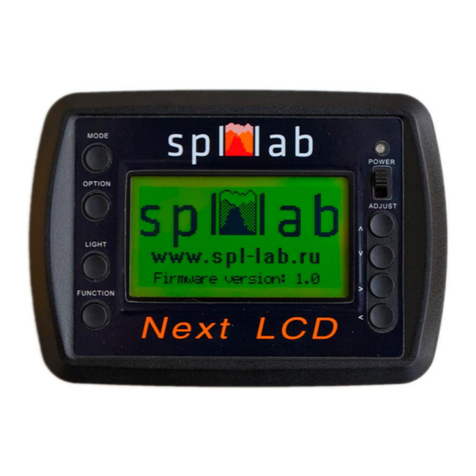
SPL-Laboratory
SPL-Laboratory Next-LCD 2015 user manual

CARLO GAVAZZI
CARLO GAVAZZI EM24 IS user manual

Mazi
Mazi HTVR-0410LT Quick manual
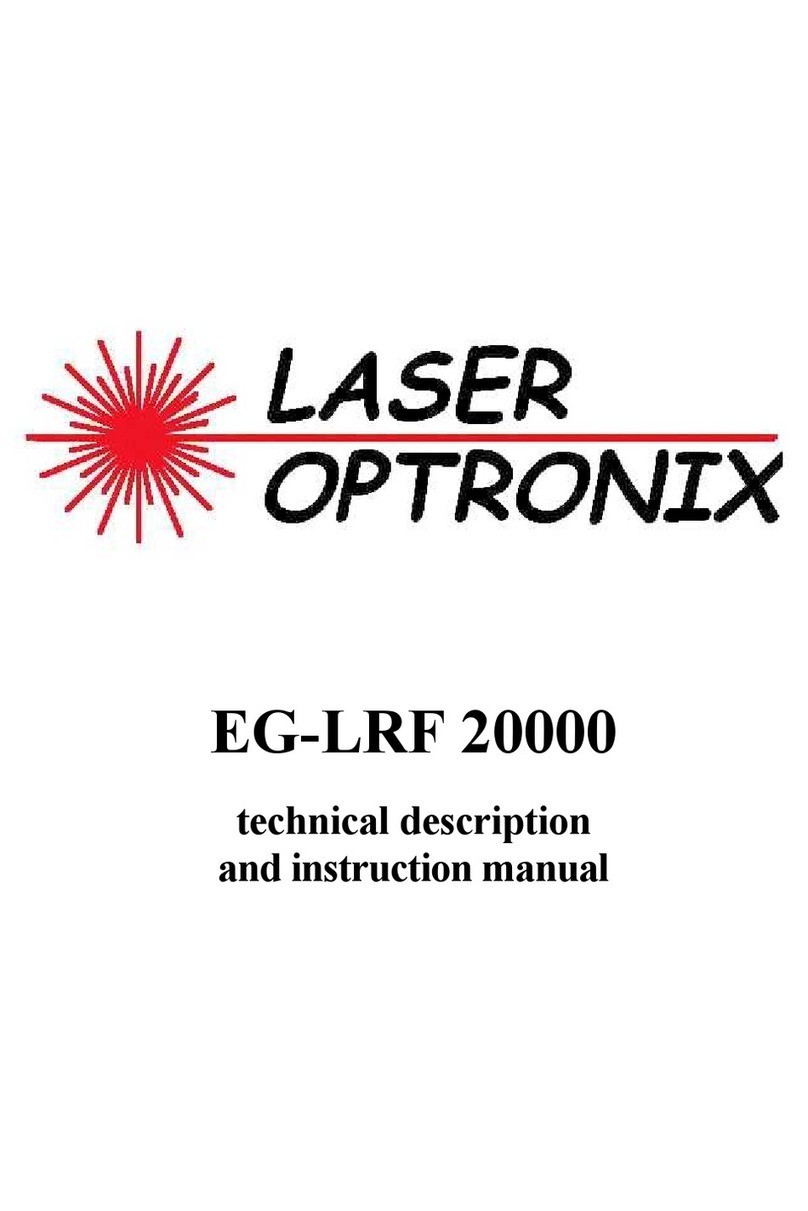
Laser Optronix
Laser Optronix EG-LRF 20000 Technical description and instruction manual

JNE
JNE BOR-ON instruction manual
